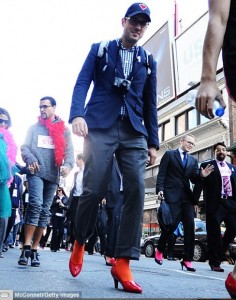Ivan Suhkov writes in the Moscow Times: Crimea symbolizes revenge — in the Soviet, political and negative sense of the word. A more accurate word is “restoration” — a restoration of the state and its rights that were allegedly violated.
By reinstating the Soviet anthem, imposing a power vertical, giving greater social and political importance to siloviki structures — particularly the secret police — and reintroducing Crimea into the country’s daily weather forecasts, Yeltsin’s successor, Vladimir Putin, has symbolically restored the Soviet Union.
However, advocates of restoration tend to miss one important point: both the Russian Empire and the Soviet Union ended in failure and collapse — the former in 1917, the latter less than a century later in 1991.
The search for a new doctrine did not end unsuccessfully because it never really began.
To appreciate that this process did not begin with the absurd ban on the “falsification of history” or the “new historiography” trumpeted by Culture Minister Vladimir Medinsky, just peruse the preamble of the Russian Constitution.
It speaks of “historically established state unity,” “revering the memory of ancestors who have passed on to us their love for the fatherland” and “reviving the sovereign statehood of Russia.”
On Nov. 19, an Investigative Committee task force teamed up with riot police in an attempt to detain a citizen allegedly involved in the criminal withdrawal of a huge sum of money. The person’s name is not as important as the fact that the police staged the operation in the center of Moscow in broad daylight against the backdrop of an unprecedented level of excitement over the revival of the Russian state.
The police operation was a complete failure.
To better understand the circumstances, note that the figure sought by police is Ramzan Tsitsulayev, whom Chechen leader Ramzan Kadyrov named one year ago as that republic’s envoy to Ukraine. The men who managed to thwart the sting operation were Chechens, and the region where Tsitsulayev is hiding out — and from where he mocks the Moscow police — is, of course, Chechnya.
That is the same republic where Moscow began operations 20 years ago to “restore constitutional order.”
Two weeks ago Moscow police detained and drove off with Magomed Aliyev, a young native of Dagestan who had come to visit his sister. Aliyev resurfaced at a detention center in Stavropol, a regional center and a sort of outpost of the federal authorities in the North Caucasus. Aliyev was urgently hospitalized on Nov. 26 after he was repeatedly beaten and someone jabbed a pen in his eye.
Regardless of any crime the young man might have committed, the actions of the siloviki far overstep the bounds of legal procedure. It might seem that Stalinist terror and a failed state are at opposite ends of the spectrum. But terror, by definition, is an act that bypasses the rule of law and so indicates the failure of the state.
In one way or another, former Soviet leader Josef Stalin is the focus of many current leaders’ ideas concerning “restoration.” They erroneously quote Churchill — namely, that “Stalin came to power when Russia had only a wooden plow, and left it in possession of atomic weapons.”
It so happens that the world has never had to cope with a failed state holding a nuclear arsenal large enough to destroy all of humanity several times over. The world barely managed to avoid such a threat in 1991, but only with some intense diplomacy, significant financial outlays and a whole lot of nail-biting.
Russian fans of “reconstruction” would like a replay of those times. And despite blithe assurances from the Defense Ministry that the command and control structure of the country’s nuclear arsenal has been fully modernized, there is no guarantee that the final act in this dark drama will end as peacefully as it did the first time.










 Here’s what he had to say about it in the catalog for the Moscow exhibition where the cool white square on a warmer white background was first shown:
Here’s what he had to say about it in the catalog for the Moscow exhibition where the cool white square on a warmer white background was first shown:
